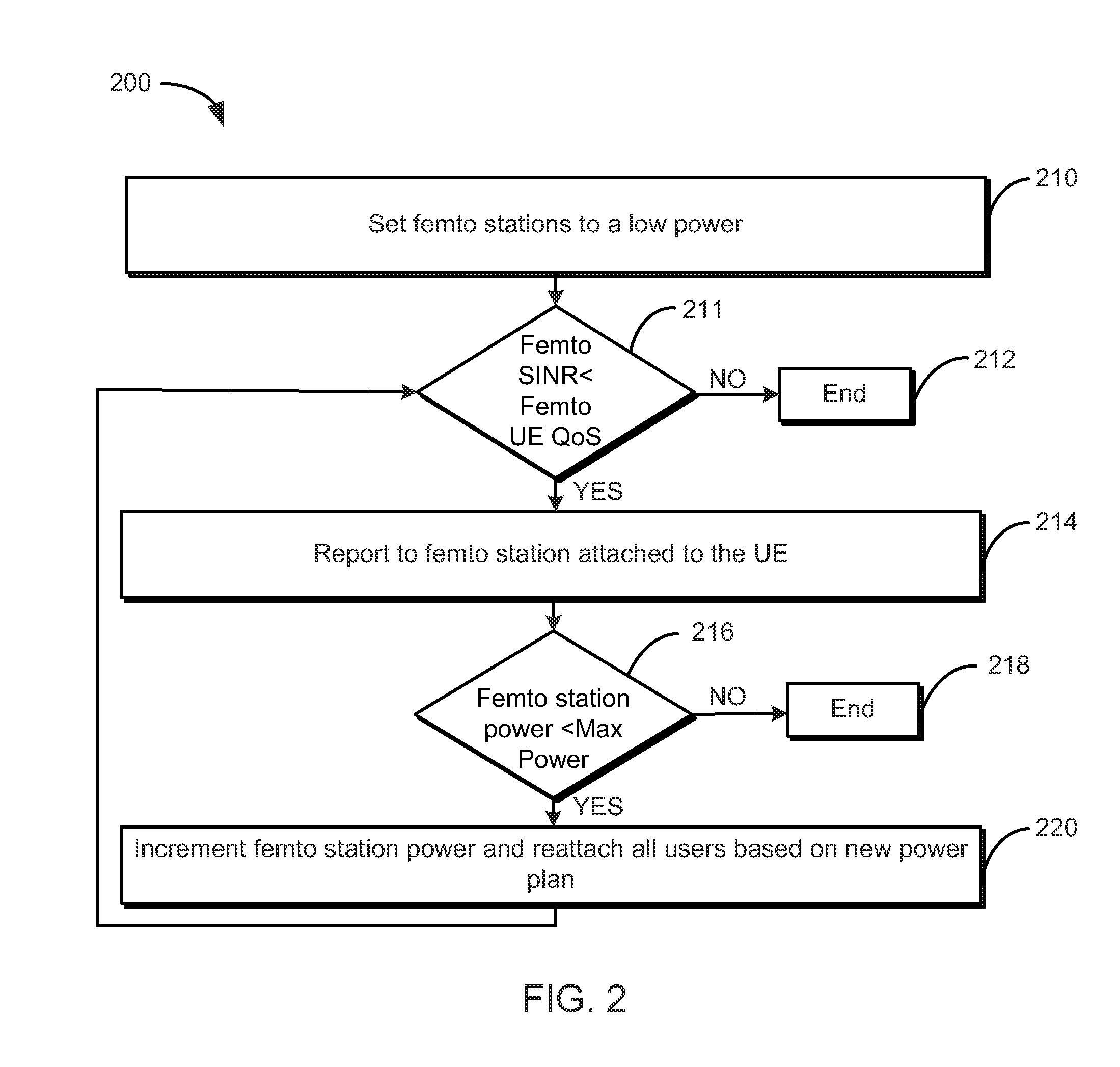Systems and methods for interference mitigation in heterogeneous networks
a heterogeneous network and interference mitigation technology, applied in the field of communication networks, can solve the problems of cell edge performance, low performance compared to homogeneous network cell edge performance, interference between femto stations and macro stations
- Summary
- Abstract
- Description
- Claims
- Application Information
AI Technical Summary
Benefits of technology
Problems solved by technology
Method used
Image
Examples
example performance
VII. EXAMPLE PERFORMANCE ANALYSIS
[0097]Table 5 shows example results of running different simulations for 20 runs. In this example, the Femto cells and UE deployment differ from one run to the other to cover different states of randomization. Each run simulates 100 frames.
TABLE 5Simulation ResultsCELLCAPACITYCELL-EDGE% OF FSsSCENARIO(b / s / Hz)(b / s / Hz)AFFECTEDFF-AP12.5680.037N / AMF-AP10.4330.041N / AFF-AP-MC12.3710.041N / AMF-AP-FC10.6010.037N / AMF-AP-ICIC6.5460.043100MF-AP-A-ICIC9.5830.02724.4FF-AP-MC-A-ICIC11.190.04723
[0098]In Table 5, the AP embodiments may be evaluated against various scenarios shown in Table 4: macro-only, femto baseline, ICIC, and AP basic algorithms. These algorithms are evaluated in terms of total area SE and the cell-edge SE. In this example, the total area SE is the SE achieved over the sector area, which includes one macro station and six femto stations. In the macro-only scenario, none of the femto stations transmits data, while the femto baseline case represents...
PUM
 Login to View More
Login to View More Abstract
Description
Claims
Application Information
 Login to View More
Login to View More - R&D
- Intellectual Property
- Life Sciences
- Materials
- Tech Scout
- Unparalleled Data Quality
- Higher Quality Content
- 60% Fewer Hallucinations
Browse by: Latest US Patents, China's latest patents, Technical Efficacy Thesaurus, Application Domain, Technology Topic, Popular Technical Reports.
© 2025 PatSnap. All rights reserved.Legal|Privacy policy|Modern Slavery Act Transparency Statement|Sitemap|About US| Contact US: help@patsnap.com



